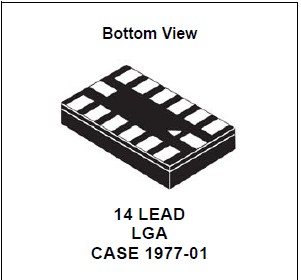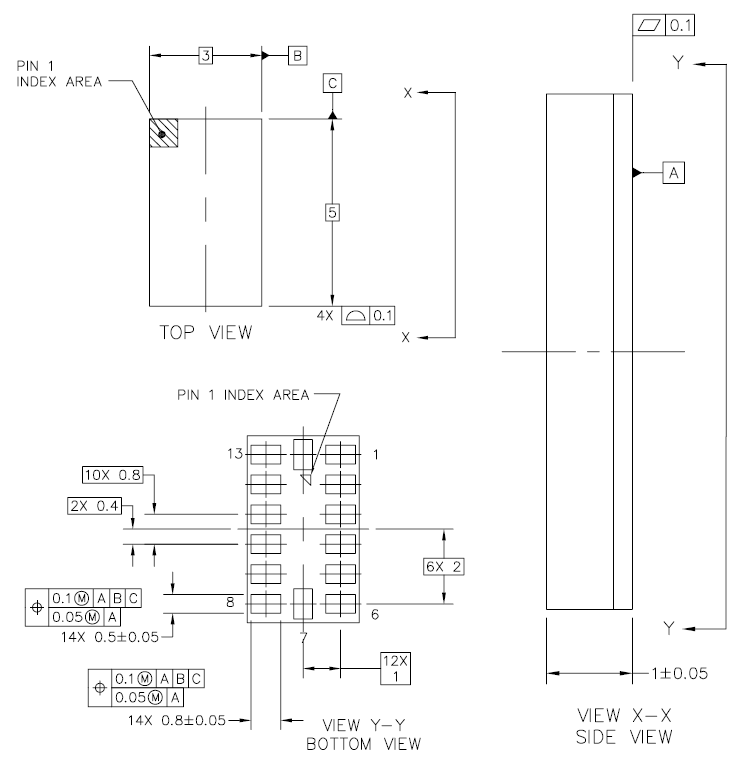Table of Contents
The coolest parts are now all leadless - great for saving space but a nightmare if you want to place by hand. Even the top skills you use for TQFPs are a challenge against QFNs. Hot air is a must if you want to hand rework these parts. We've found that it is possible to hand-rework/solder with hot air and solder paste but we also like to use our pick and place!
This tutorial will show how to get QFN/TQFN/LGA/etc leadless parts placed
LGA-14: Lets go!
Outer dimensions
The first things we need to figure out are the outside dimensions including thickness
Looking at the dimensional drawing, we see that it is 3mm by 5mm and 1mm thick
Pad size
Next we need to calculate the pad dimension this will help the vision system determine what to look for. Note that there is a tiny triangle next to one of the pins, we need to tell the vision to ignore small pads that are just indicators and just use the big pads
It looks like each rectangular pad is 0.5mm x 0.8mm
Nozzle?
We usually pick up the nozzles and see which is the biggest nozzle we can use. The bigger the nozzle, the less slipping we'll get while transporting the part around. We found nozzle #4 was the biggest we could go, maybe #5 would be OK
Part definition
The X and Y are the width and height of the part (mm), Thick is the thickness (mm). We'll use bottom vision for small component (LunaVis = 26)
The Pt and W entries are used for filtering. The Pt is the 'high end' of what sizes we'll look for and W is the 'low end' So if each rectangular pad is 0.5mm x 0.8mm, we'll make Pt 1.0 mm (larger than 0.8mm) and W 0.25mm. This way we'll ignore the tiny triangle *
| Part | Nozzle | dx0 | dy0 | st | da9 | X | Y | Pt | W | Thick | LunaVis | TS | Level | Type | Voff | Remark |
|---|---|---|---|---|---|---|---|---|---|---|---|---|---|---|---|---|
| 14-LGA | 5 | 0 | 0 | 0 | 0 | 3 | 5 | 1 | 0.25 | 1 | 26 | 60 | CSP | 14-LGA |
* (this is my guess actually, i dont completely understand the filtering funciton of Pt & W)



